This post may contain affiliate links for which I earn a small commission at no extra cost to you. For more info, check out my Disclosure Policy. Thank you for your support!
If you’re looking for the BEST gluten free pastry recipe then look no further! This gluten free shortcrust pastry is super pliable, deliciously buttery and perfect for gluten free pies, pasties, quiches and tarts. Nobody will even know it’s gluten free!
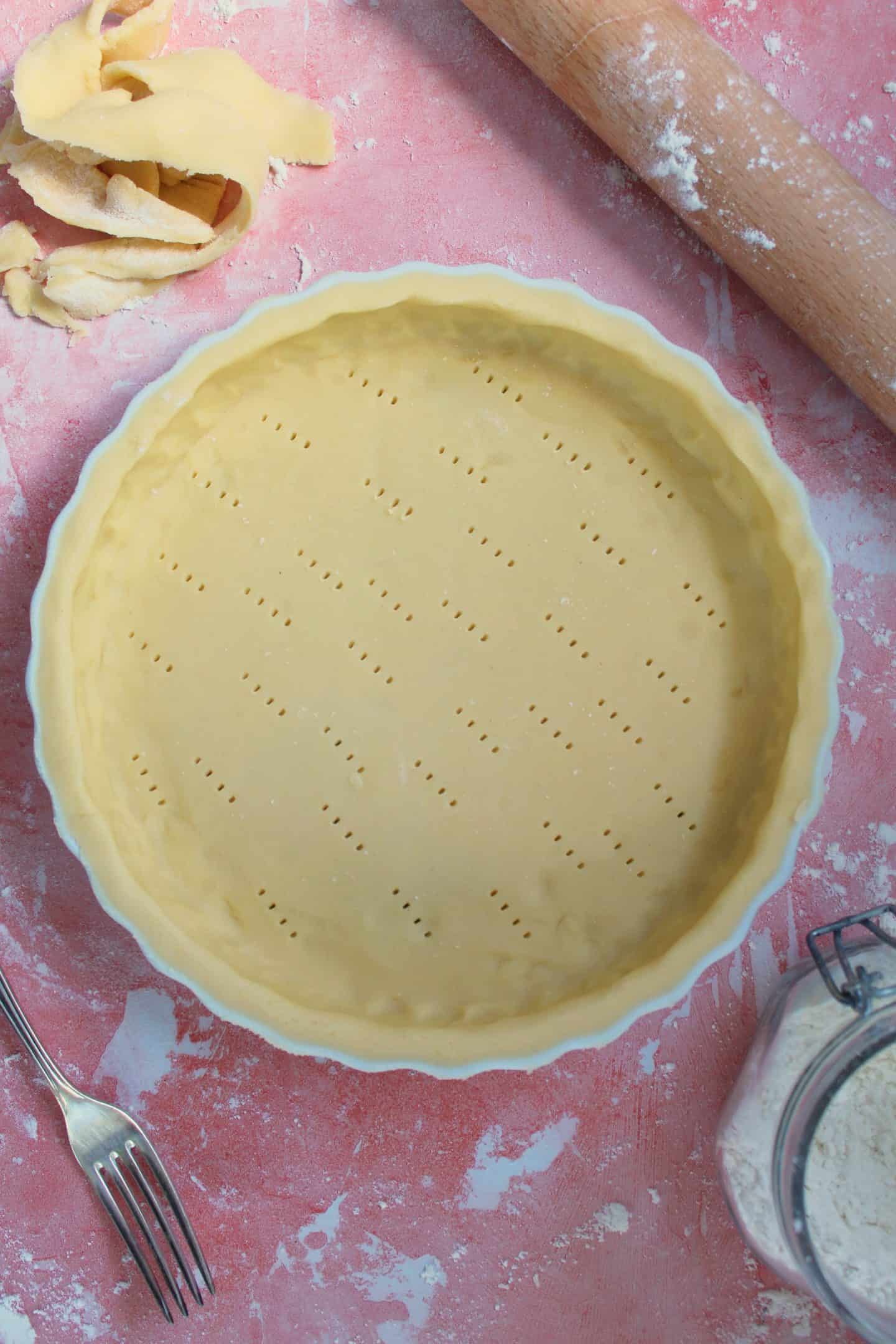
Plus it’s SO easy to make, only needs a few ingredients, and always gets compliments from gluten-eaters who can’t believe it’s gluten free!
Why make my gluten free pastry?
- Super Easy: There’s no need to struggle with gluten free pastry that breaks or sticks to the worktop. This is super pliable and easy to make and use.
- You Can’t Overwork It! We’re always told not to overwork pastry – but this is because of the gluten. You can re-roll my gluten free pastry as many times as needed because there is no gluten to worry about!
- Minimal Ingredients: You only need a few storecupboard essentials – gluten free flour, xanthan gum, butter, egg and water – to make this gluten free shortcrust pastry.
- Tried and Tested: This recipe has been tested hundreds of times and all my friends and family say they prefer it to gluten-containing pastry.
- Super Adaptable: Whether you want sweet pastry for mince pies, savoury pastry for a gluten free quiche or pie, or a fun project such as pop tarts, this recipe is perfect.
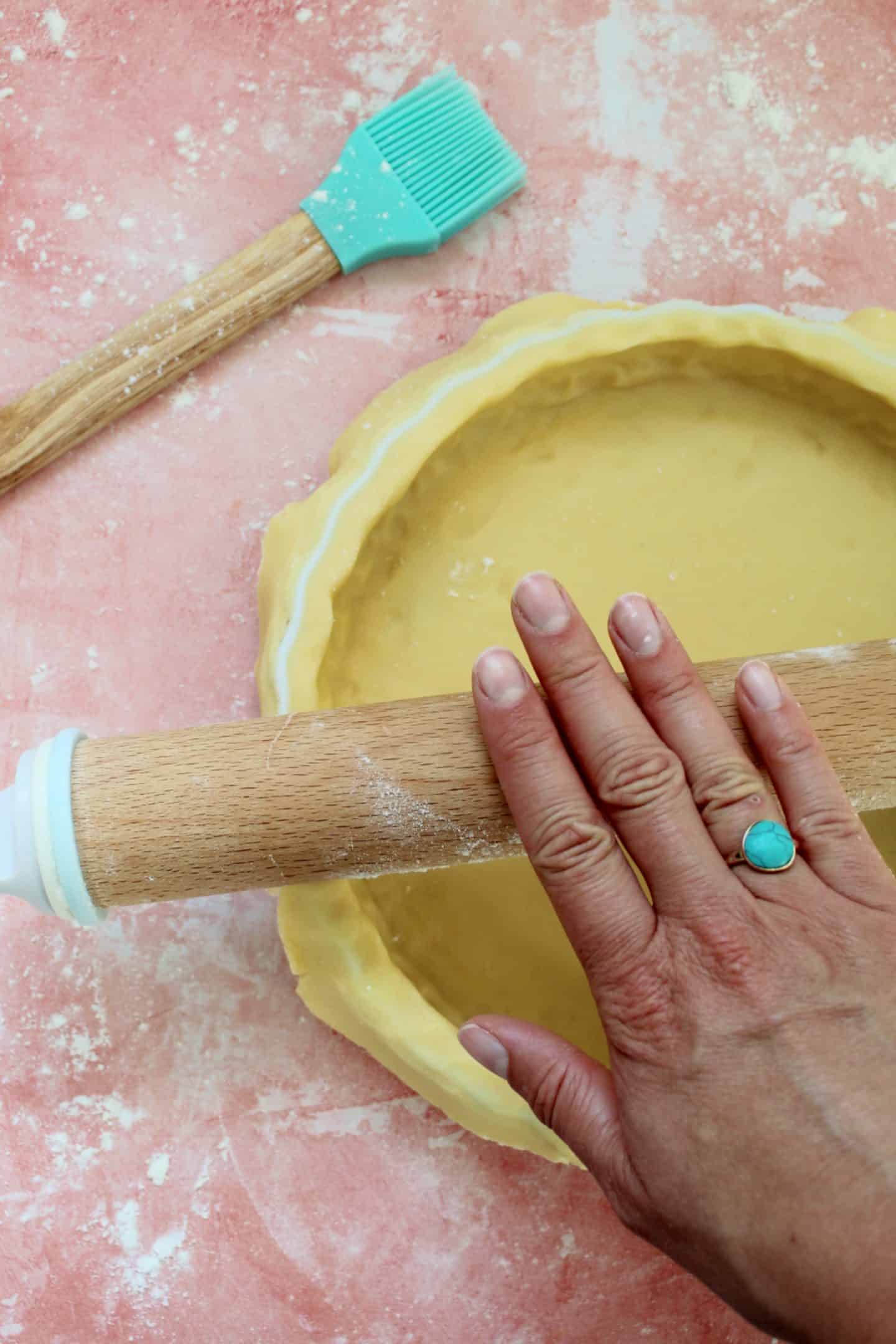
Ingredients
How to make gluten free pastry
There’s a printable recipe card below, but here are some step-by-step photos to guide you through how to make my gluten free pastry recipe.

Add the flour, xanthan gum, salt – and sugar if using – to a large mixing bowl and stir together.
Cut the COLD butter into cubes and then add to the bowl. Using your fingers, rub the mix together until it resembles breadcrumbs (right hand photo above).
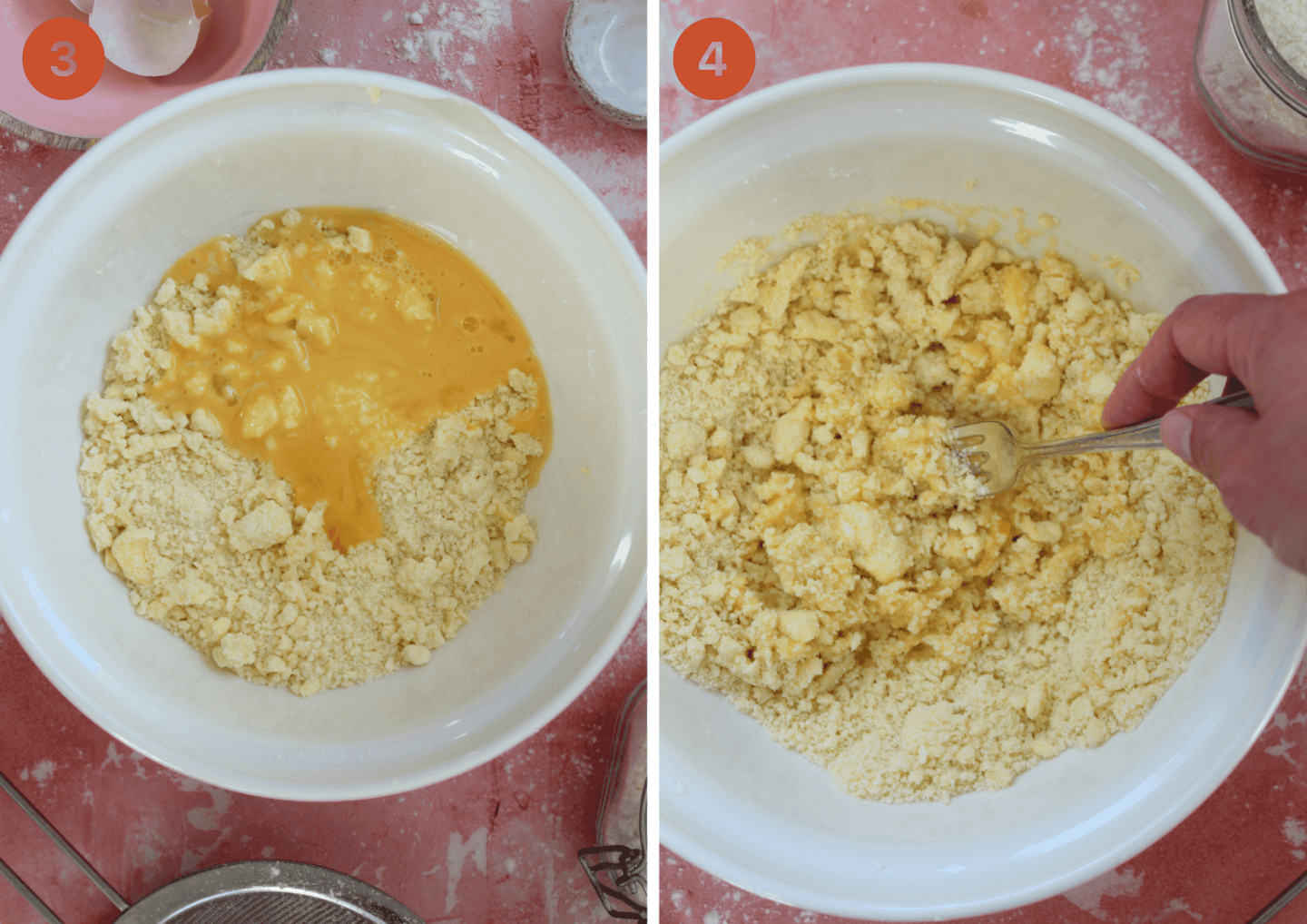
Crack the eggs into a bowl or mug and add the cold water. Whisk together until just combined. Add to the mix and bring together using a fork.
Once it becomes harder to use the fork to mix, use your hands to bring the mixture together into a smooth dough. You should be able to pick this up easily without it being too sticky.
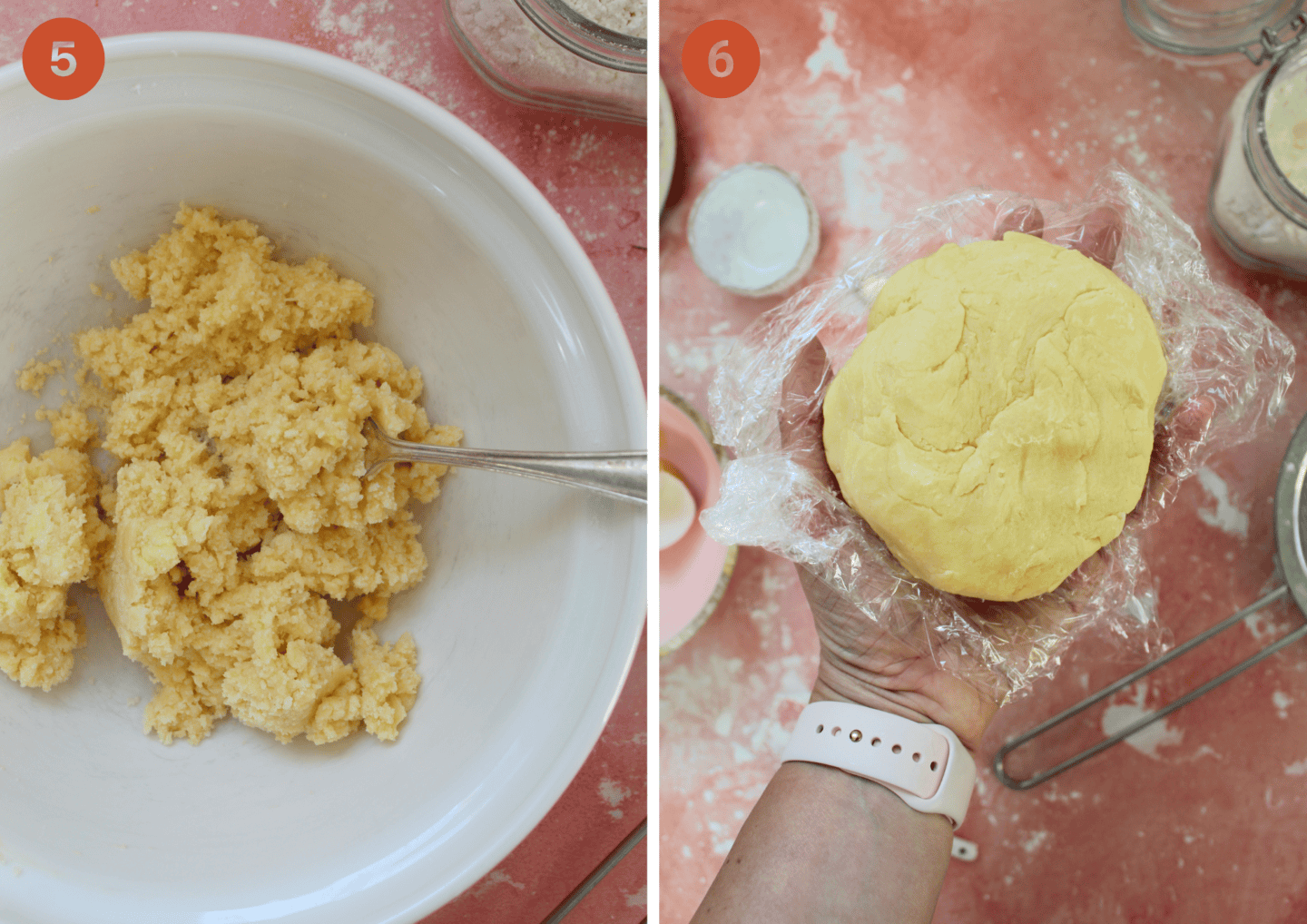
Wrap the dough in clingfilm and chill in the fridge for at least 30 minutes. This is a really important stage – you need the dough to chill a bit so it is easier to roll!
Once chilled, knead the dough on a lightly floured work surface until it is pliable. Keep the surface well-floured as you roll out the pastry dough to the desired thickness.
Either cut the mini shapes using a pastry cutter, or transfer to a pie dish if making a quiche/pie before blind baking and/or filling.
How to blind bake gluten free pastry
If you’re making something like a gluten free quiche recipe, you’ll need to blind bake the pastry first. This is simple – let me show you how!
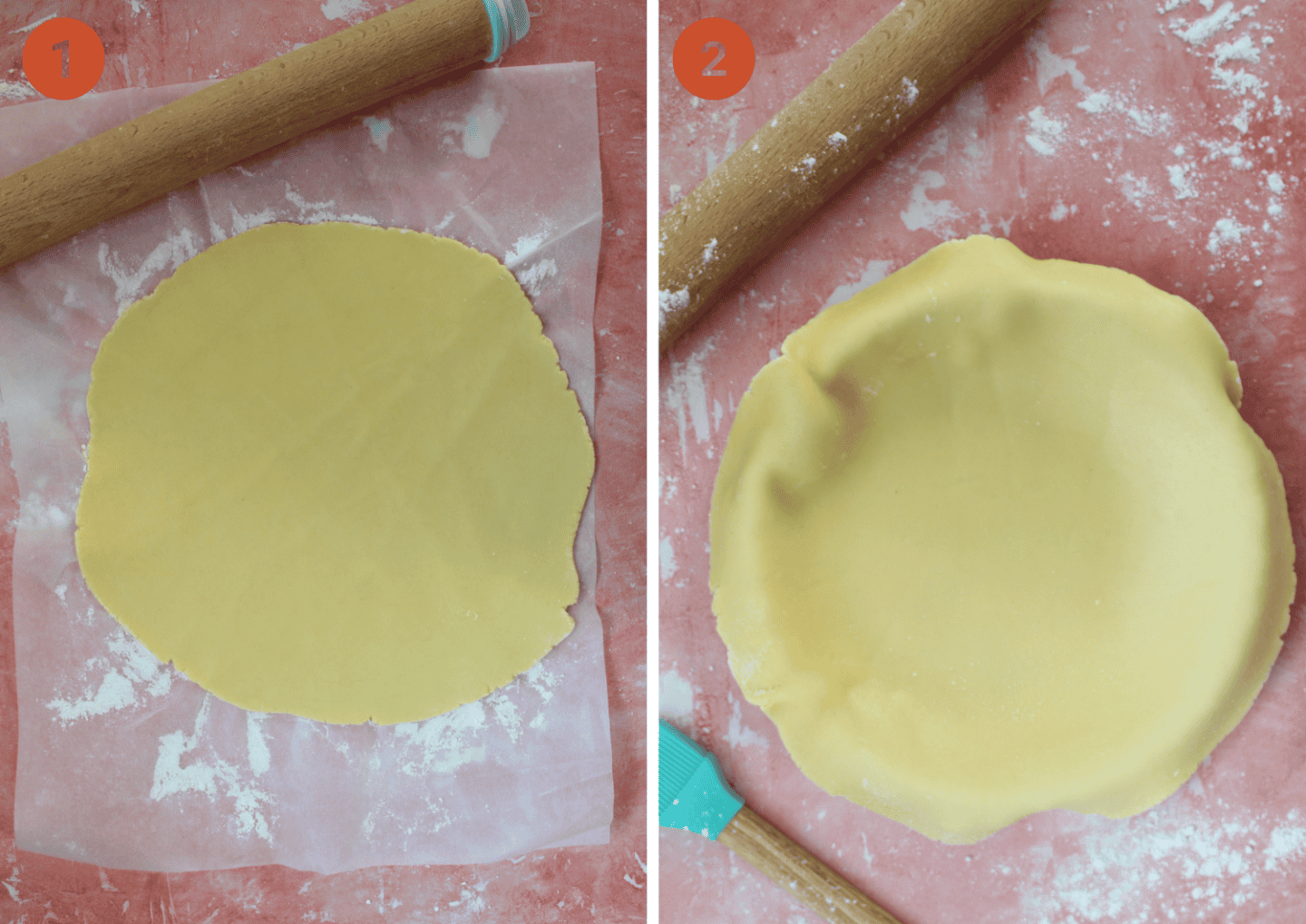
To blind bake your pastry, carefully use the rolling pin to lift the pastry into your pie dish. Don’t worry about trimming any overhang yet.
Use your fingers to press the sides of the pie into the ridges of the dish. Break off a small piece of the overhanging dough and roll into a ball – use this to press the pastry in further (it will stop your finger nails going through the pastry!).
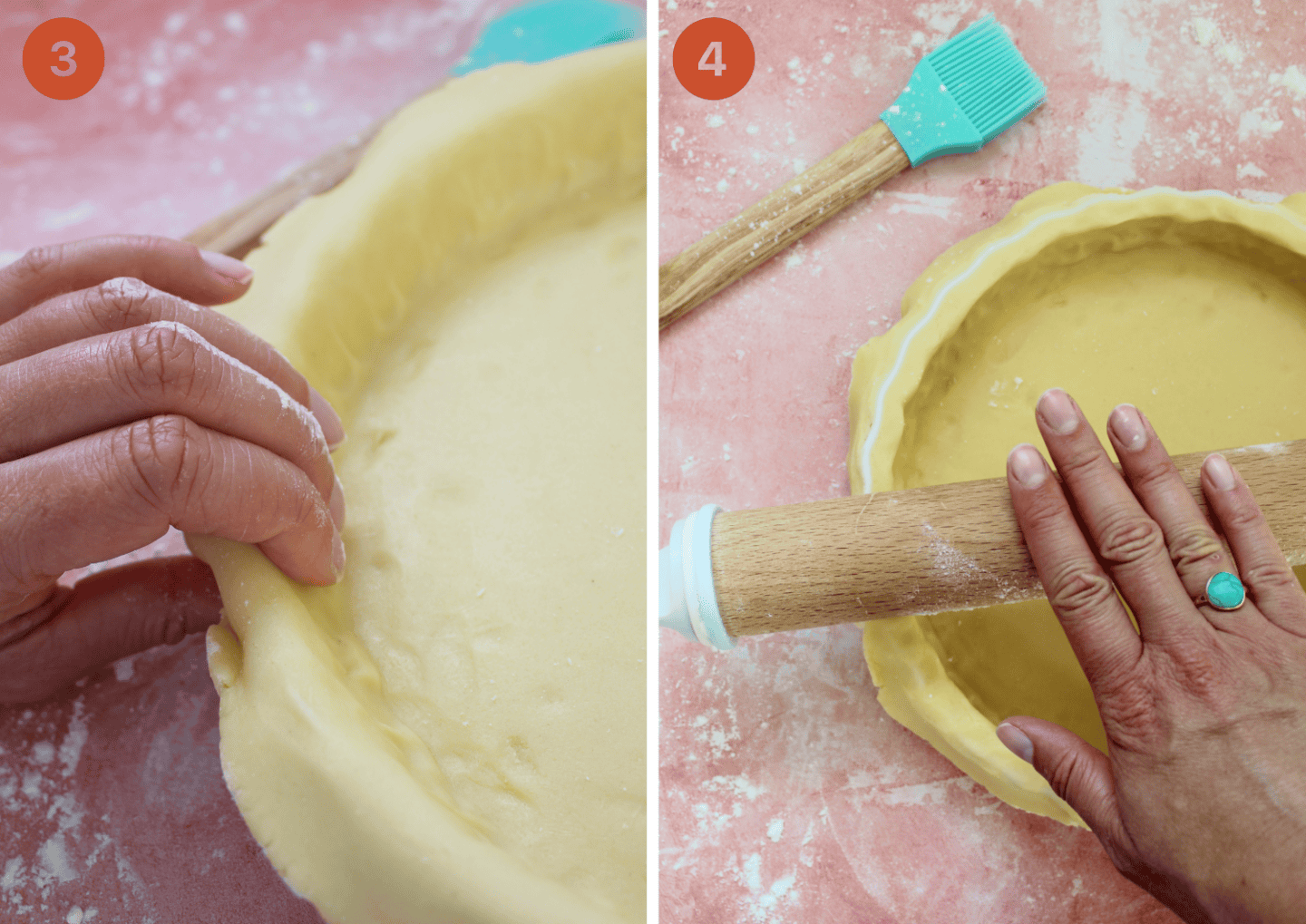
Gently push the overhanging pastry back over the pie dish so you have a couple of mm which are slightly thicker at the top of the pie crust. This will help to minimise any shrinking.
Roll the rolling pin over the top of the dish and then remove any excess pastry and prick the bottom all over with a fork.
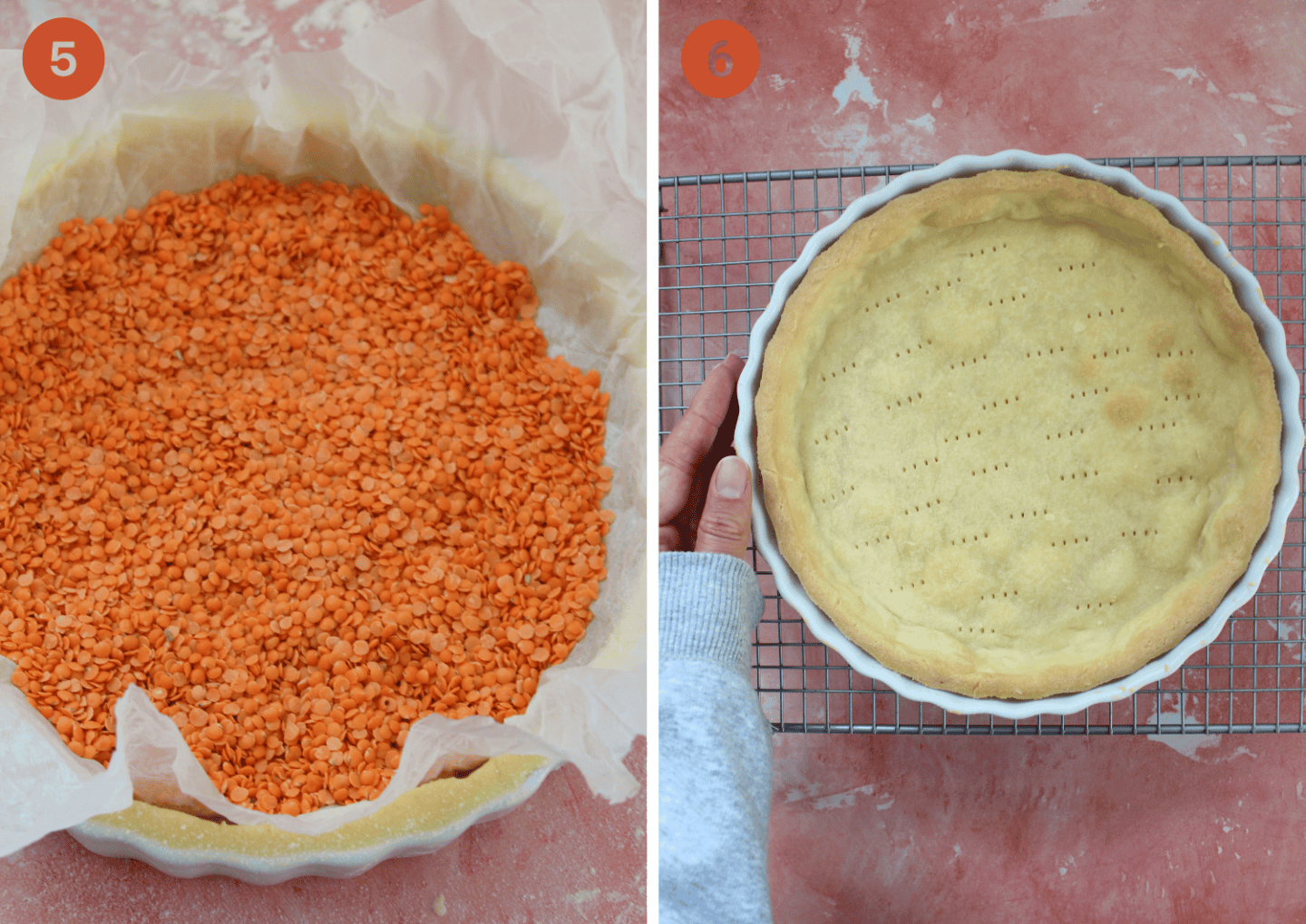
Place a piece of baking paper over the top of the pastry and fill with baking beans (or dried rice/lentils).
Bake in a preheated oven at 180’C / Fan 160’C / Gas Mark 4 for 10 minutes. Carefully remove the baking paper and beans, then bake for another 5-10 minutes until golden.
Fill and bake the pastry case as per the individual recipe you’re following.
Top tips for the BEST results
- Pastry too sticky? Make sure you keep it super chilled – pop it back in the fridge if it’s a hot day. You can also roll it between clingfilm if you find it is sticking to the work surface or you’re using too much flour.
- Pastry too crumbly? If you’ve re-rolled the pastry a few times it may dry out due to the floured work surface. Simply wet your hands and knead it a few times and it will become pliable once again!
- Pastry too wet? If you’ve added a little too much water to the dough it can become wet. Simply add a tiny sprinkle of gluten free flour and knead it in.
- Struggle to use your hands? Use a food processor to blitz the butter and flour mixture into a breadcrumb-like texture instead of your fingers. This also is a good way to do it if you have hot hands, to stop the butter melting!
Recipes using gluten free pastry
Savoury gluten free pastry recipes
Sweet gluten free pastry recipes
You might also like
If you make this recipe and love it, please do let me know by tagging me on my Instagram or using #theglutenfreeblogger. You can also share your creations in my Facebook group! And please do leave a 5* review ⭐️⭐️⭐️⭐️⭐️ to let others know you loved it too! It would mean the world to me and really helps support my website.
Gluten Free Pastry
Equipment
Ingredients
- 340 g plain gluten free flour
- 2 tsp xanthan gum
- 2 medium eggs
- 2 tsp water
- 220 g unsalted butter, cold
- Pinch salt
Optional:
- 1 tbsp caster sugar, (for sweet pies and tarts)
- 1 egg, beaten
Instructions
- Add the flour, xanthan gum, salt (and sugar if using) to a large mixing bowl and stir together.
- Cut the COLD butter (and Cookeen/lard if using) into cubes and then add to the bowl. Using your fingers, rub the mix together until it resembles breadcrumbs.
- Crack the eggs into a bowl or mug and add the cold water. Whisk together until just combined. Then add to the mix and use a fork to start to ‘mush’ the mixture together. You’ll see it start to form a sticky dough.
- Once it becomes harder to use the fork to mix, use your hands to bring the mixture together into a smooth dough. You should be able to pick this up easily without it being too sticky.
- Wrap the dough in clingfilm and chill in the fridge for at least 30 minutes. This is a really important stage – you need the dough to chill a bit so it is easier to roll!
- Once chilled, knead the dough on a lightly floured work surface until it is pliable. Keep the surface well-floured as you roll out the pastry dough to the desired thickness – or you can roll it between two sheets of clingfilm if you find it easier. I usually roll the pastry to between 4-6mm for pies, tarts and quiches.
- Either cut the mini shapes using a pastry cutter, or transfer to a pie dish if making a quiche/pie before blind baking and/or filling.
To blind bake:
- If you need a 'blind bake' in your pastry recipe, carefully use the rolling pin to lift the pastry into your pie dish. Don't worry about trimming any overhang yet.
- Use your fingers to press the sides of the pie into the ridges of the dish. Break off a small piece of the overhanging dough and roll into a ball – use this to press the pastry in further (it will stop your finger nails going through the pastry!).
- Gently push the overhanging pastry back over the pie dish so you have a couple of mm which are slightly thicker at the top of the pie crust. This will help to minimise any shrinking. Roll the rolling pin over the top of the dish and then remove any excess pastry and prick the bottom all over with a fork.
- Place a piece of baking paper over the top of the pastry and fill with baking beans (or dried rice/lentils).
- Bake in a preheated oven at 180'C / Fan 160'C / Gas Mark 4 for 10 minutes. Carefully remove the baking paper and beans, then bake for another 5-10 minutes until golden.
- Fill and bake the pastry case as per the individual recipe you're following – I have a few suggestions below this recipe card!
For pies and mini tarts:
- For mini pies, roll the pastry to the desired thickness and use a pastry cutter to cut out the shapes you need. Re-roll any excess and repeat until all the pastry is used up. If it gets a little dry and crumbly, wet your hands slightly and work the pastry so it moistens a little. If it gets too sticky, chill it for 10-15 minutes before rolling.
- For a golden pie top, brush the pie lid with a beaten egg before cooking. For sweet pies you can then also sprinkle with a little sugar too!
Video
Notes
- It’s important to use cold fat in this recipe – if the butter becomes too warm if will affect the pastry’s texture.
- I always use the FREEE by Doves Farm plain gluten free flour blend for this but any gluten free plain flour or all purpose flour blend should work.
- You can use a mixture of 110g unsalted butter and 110g Lard/Cookeen if you prefer. Add the lard/Cookeen as you would the butter – cold and cubed.
- Check out the FAQs below this recipe card and leave me a comment if I haven’t answered your question!
Nutrition
Frequently Asked Questions
In case you have any questions, I’ve listed a few FAQs about my gluten free pastry recipe below.
As always, if you can’t find the answer you’re looking for, please leave me a comment and I’ll do my best to get back to you with the answer!
This recipe can easily be made dairy free by using either a dairy free margarine (go for a harder one) or lard/Trex/Cookeen instead of butter. Make sure you use dairy free milk to brush any pie lids as well.
This recipe relies on egg so is currently not vegan. I haven’t found a vegan pastry recipe I’m happy with yet but when I do, I will share it!
Yes! This gluten free pastry dough can be made and frozen – then defrost it and roll it out when ready to bake. You can also make this gluten free pastry 1-2 days ahead of time and then pop it in the fridge until you want to bake.
Any cooked gluten free pastry items can usually be frozen dependant on the filling – check the individual recipes for advice on this.
The xanthan gum is really crucial to this recipe. I tested multiple variations of this gluten free pastry and without the xanthan gum it just crumbles. It helps to replicate the texture of gluten and is what makes this pastry so pliable!
Yes! If you struggle to use your hands to rub the pastry mixture together, or just don’t want the mess, you can simply use a food processor to blitz the flour and butter mixture to a breadcrumb consistency instead!
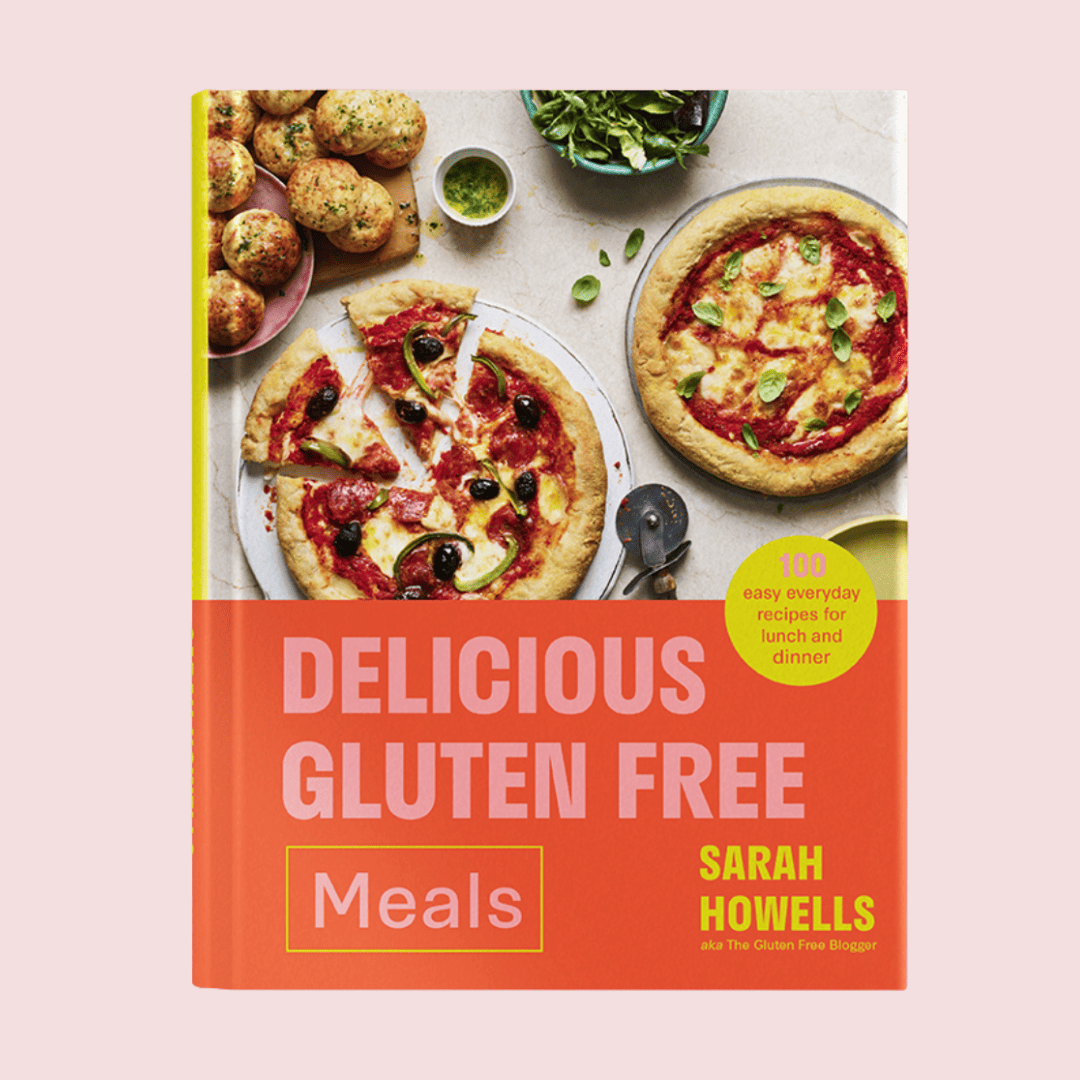
Get my cookbook!
Want more gluten free meals inspiration? My debut cookbook, Delicious Gluten Free Meals, has 100+ gluten free recipes, from breakfast and lunch ideas to dinners, desserts and sides.

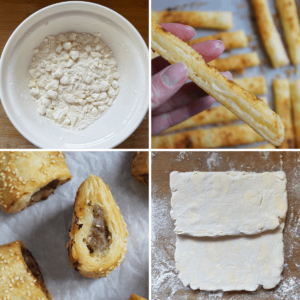

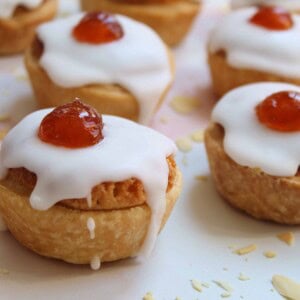
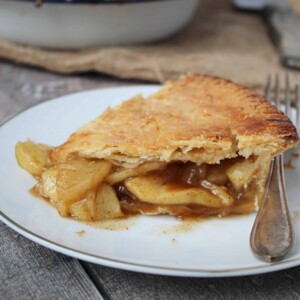
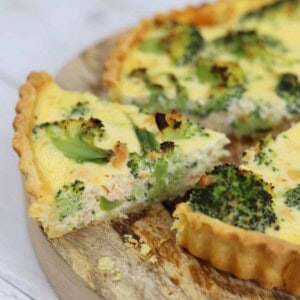



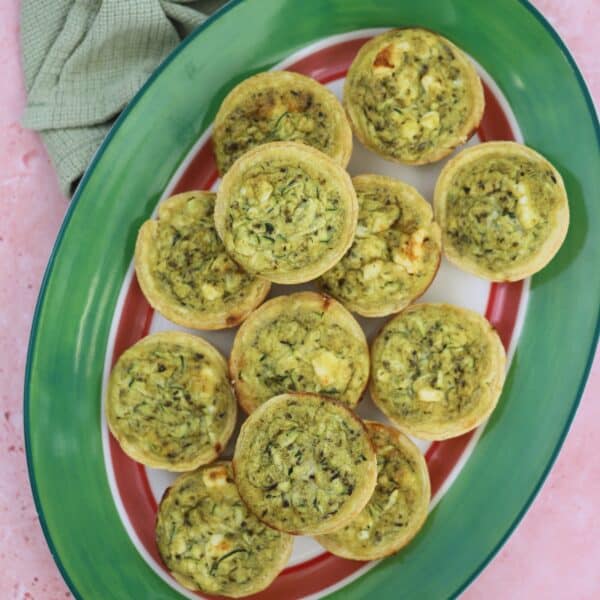
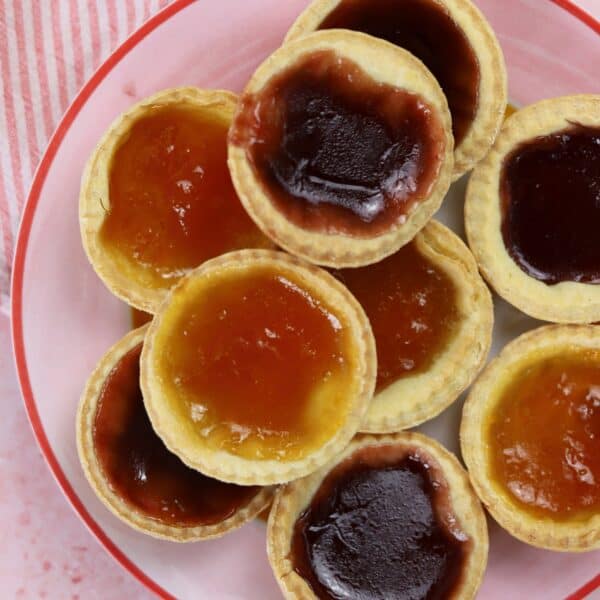
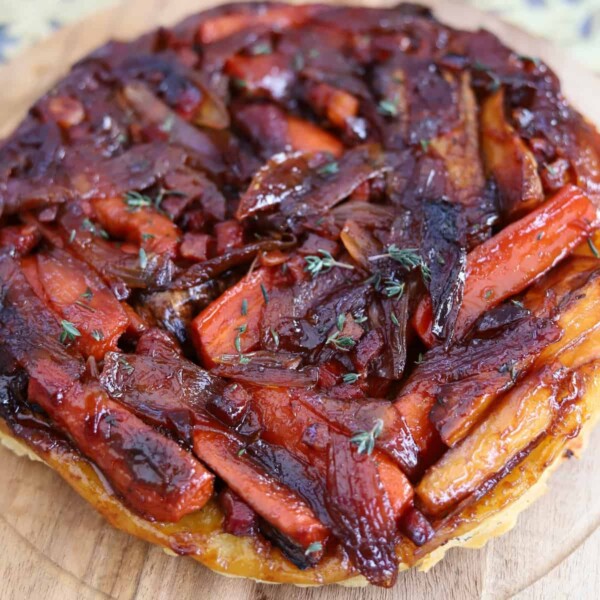









Please identify WHICH brand of flour you use. They are most certainly are NOT all the same. They handle very differently, absorb liquid differently and bake differently. Can get some super results…and also some pastry fit for making a garden path. Over the years have used Doves Farm, M&S, Asda, plus some from brands no longer available. Results vary so much. I don’t use the brands with Codex starch.
I have now updated the post with the brand 🙂
Came on the site for a shortcrust recipe and 2 scrolls down – it is there, thank you – will try this. Loving your site as a newly diagnosed coeliac. You are very inspiring x
Thank you, so glad I could help!
Hi there, please please tell me I can use some form of egg replacer?! Please.
I tried thus crust last year, and cannot have egg, so used a Chia Egg replacement. I don’t actually know how it feels with an egg because I haven’t done that at all, but the Chia egg turns out ok.
tried this pastry yesterday and by far the best i have made, and i’ve tried many ! thank you so much, quiche is back on the menu
Thank you so much – this is amazing news!
Do you have any tips for a family that don’t use clingfilm? Beeswax wrap will not work with this lol.
Sorry for not seeing this sooner! You can buy reuseable baking mats which are useful or I use baking paper a lot too 🙂
Just know that no matter what you choose, the appear is wonderful. Almost all the online casino games are accessible for you to perform at this place. These are the different versions of the poker.
Your gf pastry recipe no matter how I try I can’t find quantities for the ingredients anywhere!!
What weight of finished pastry does this make?
Thanks
Egg replacement? Thank you
I haven’t done much baking with an egg replacer before so I’m afraid I wouldn’t want to make suggestions I haven’t tried. I am working on a vegan version though!
I’ve successfully used the plant-based Just Egg in a number of recipes.
Dennis
I usually use a food processor to make pastry as it cuts down the amount of handling required. Is there any reason why this wouldn’t work for gluten free pastry?
No you can use a food processor! No problem at all, I just hate washing them up haha!!
Can the dough be made up and stored in the fridge or freezer for future. If you have tried it what were the pros and cons?
hola, buscando una receta para tarde me tope con esta y me a parecido estupenda. mas sin embargo me gustaría saber si los huevos se pueden omitir o sustituir.
gracias de antemano.
un abrazo!!